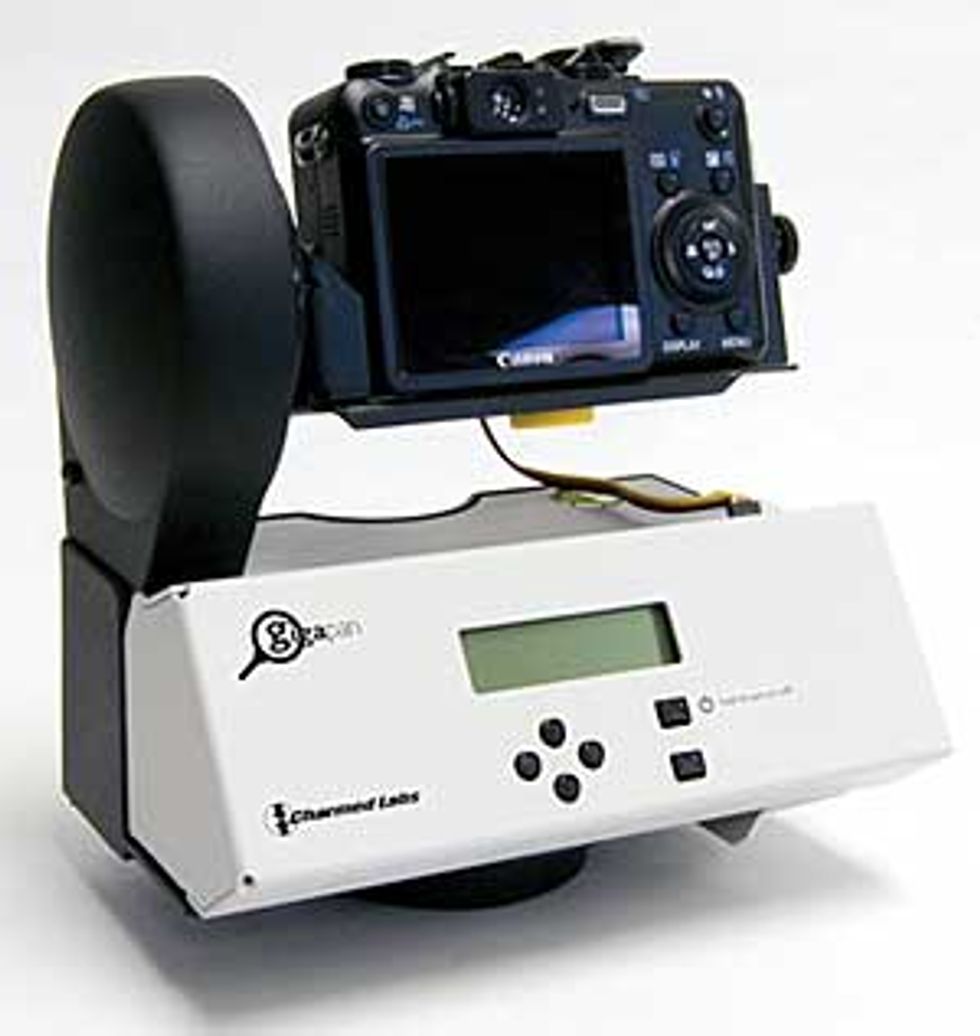You don’t want to look at the Grand Canyon through a keyhole—you want it in all its glory, in a panoramic view. That means taking a lot of overlapping photos and stitching them together, one by one.
Now there’s a robot that can do the job for you. Called the GigaPan, it’s a small gray box with a black frame that holds your digital camera in place on top of a tripod. Once programmed, it automatically captures hundreds of photos that software later splices into a high-resolution, gigapixel image.
Chalk it up as one of the space program’s few genuine spin-offs, the product of NASA’s work on visualization and image analysis for Mars missions. The commercial developer is the Global Connection Project, led by Carnegie Mellon University and the NASA Ames Intelligent Robotics Group, with financial support from Google. This past fall, a beta version was distributed to about 400 people around the world. The manufacturer, Charmed Labs, in Austin, Texas, expects to sell the retail version for US $350.
Programming is easy. Four buttons allow you to pan and tilt the camera. You set the boundaries of the panorama by making the GigaPan point first to the top left and then to the bottom right corners of the chosen scene. A two-line LCD screen leads the user through the process. The device then calculates how many pictures are needed and asks the user to make sure the camera has enough memory to store them. After checking a few more camera settings, the GigaPan moves over to the left and begins snapping away, using a lever to push the camera’s button.
The shoot was managed by the GigaPan [above]; the even more laborious quilting job, by the associated software.
The robot takes the photos in an orderly grid, column by column. A really big panorama—say, a 360â''degree view of Paris photographed from the top of the Eiffel Tower—can take more than an hour to shoot.
Later, your computer runs custom software developed for the GigaPan to piece the images together. The software knows precisely where the camera was pointing for each picture, enabling it to line up the images almost seamlessly—a big advantage over shooting panoramas manually. The stitching process requires about half a minute per picture, so a panorama with a hundred images would take less than an hour to assemble. One with a thousand pictures could take all night.
You can share the resulting panoramas on the GigaPan Web site (https://gigapan.org). Visitors to the site can maneuver around inside a panorama, zoom in for a closer look, and capture still frames to highlight interesting parts of the shot. Google Earth 4.2 also has a layer that features selected panoramas.
The camera is the only limiting factor. The more it can zoom in on a target, the more detail it can capture in each shot. The current GigaPan can’t hold heavier single-lens reflex cameras, only the consumer-level, point-and-shoot cameras that most people have.
Of course, the world won’t stay put while the GigaPan snaps away—the lighting may change, people may move, and some objects may get cut off. But in a way, those quirks can make the panorama more interesting, almost like a time-lapse exposure.
The GigaPan is a cool toy with a grander purpose: to give people the means to document the world around them and put it online for anyone to explore.
